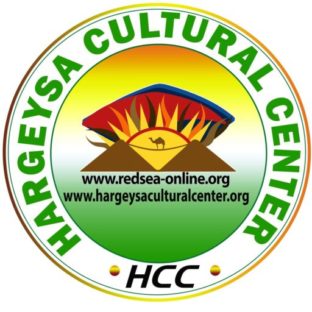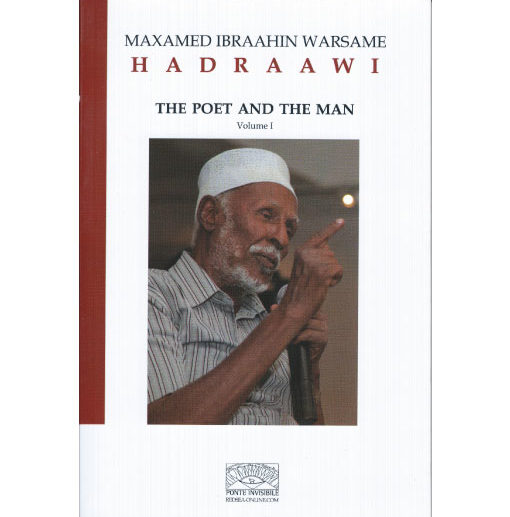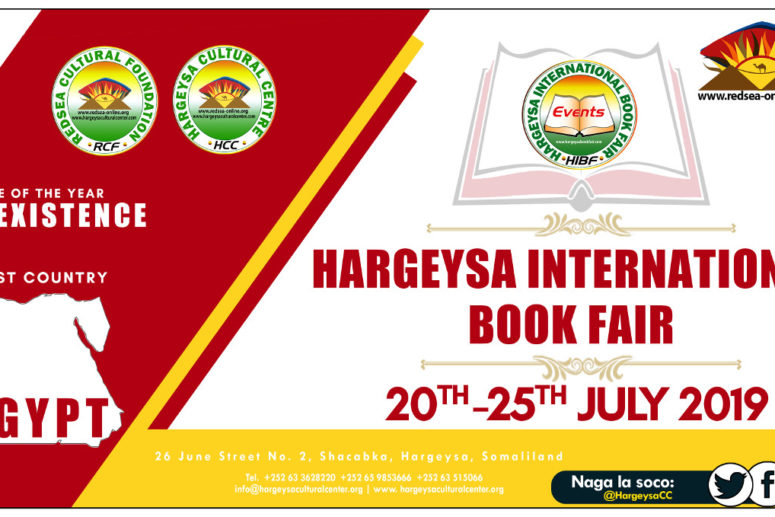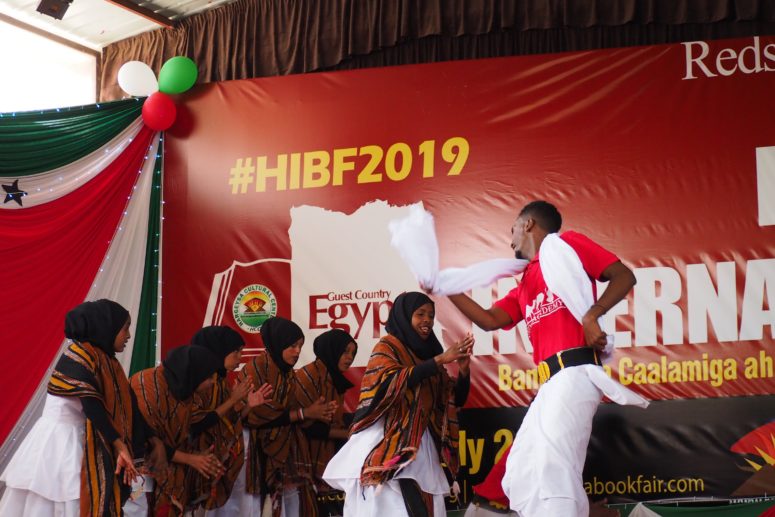Commitment and the Poet: A Review of Maxamed Ibraahin Warsame “Hadraawi”: The Poet and the Man
Ubaji Isiaka Abubakar Eazy
Within the literary sphere, there has oft’ been this argument of what the actual role of the poet ought to be in society. On the one side of this argument are those who believe that the poet does not owe society any allegiance and should be contented with just documenting his thoughts (commitment to art) while on the other side are those who believe that a poet’s loyalty is to his people and the society he belongs. Poets who find themselves in the latter group are of two sub-categories; the first group are those who are content with just pointing out the ills in the society, using their art to incite social revolution, being the voice of the oppressed and downtrodden, and act as the vanguard of society; pointing out the path that society should go even though they do not engage the society physically. However, poets who find themselves in the second subgroup do all that those in the first subgroup do, but they are not content with just documenting the ills in the society alone; they go on to engage the society physically. This second group of poets see themselves as active participants and leaders of change in society; some, like Christopher Okigbo, had dumped the pen to pick the gun, some, like Ngugi wa Thiong’o and Jack Mapanje, had been incarcerated for daring to write against their governments, and others, like Wole Soyinka, have led numerous protests against societal injustice. It begins to appear as if poetry is beyond art, it is also commitment to one’s society. Today, we shall review a collection of translated poems of a famous and legendary Somali poet; Maxamed Ibraahin Warsame (Hadraawi) and see what the book has to say on the issue of “commitment”.
Maxamed Ibraahin Warsame; popularly known as Hadraawi; is perhaps one of the greatest living Somali poet, playwright, and philosopher. His poetry is composed in a sublime form of the Somali language employing vivid images and sound devices (such as alliteration)—indeed, many Somalis can recite his poetry offhand and most of his poems have musical renditions already. His poems bother on issues related to war and peace, love, societal mores and values, maladministration in governance, justice, patriotism, and many more. Hadraawi did not just write, he was actively involved in the changes that took place in his society in his younger days. For daring to criticise the despotic government of Siad Barre in a play he composed, he was subjected to internment where he rejected inking an apology as the only condition for his release. Upon release, he fled to Ethiopia where he joined the Somali National Movement (SNM), and continued unleashing revolutionary poems. He would later refuse to seek asylum in the United Kingdom, and return to his homeland to singlehandedly lead a march (known as the “Hadraawi Peace March”) appealing for peace and an end to all animosities. Evidently, Hadraawi sees poetry not just as art, but also as a tool to be employed in changing the society for he did not only talk the talk—he also walked the walk. Herein lies his commitment as a poet to his people and society.
The collection placed under scrutiny is titled Maxamed Ibraahin Warsame “Hadraawi”: The Poet and the Man and it has seven of Hadraawi’s poems translated from Somali language to English by WN Herbert et al. The work is a commendable effort, although no one can argue that much of content and form has not been lost in translation.
“Society” is the first of the documented poem in the collection; it bespeaks the imminent fragmentation that was quickly engulfing the Somali society at the time of its composition. Hadraawi; in this poem; identifies lack of sagacity, blame, and greed as the major ills bedevilling his society; the resultant effect of these ills are therefore cowardliness, brutality, and disorderliness.
Wise council: you’re unobtainable!
Blame: you breed without bounds!
Greed: you are unbridled!
Brave horse: you’re hamstrung here!
Brute force: you bare your brainless face!
Sea of disorder: your full volume,
your ebb and flow and breadth—
could I scoop you in this cup? (29)
The poem, “Society”, tells of societal disintegration, brothers fighting brothers, ballooning of trivial issues, irresponsibility and alienation on the part the political leaders, and finally lands on why the poet has chosen to pitch his tent with his people against the rulers; he punctuates every stanza with “would I be so at one with you?”.
You, the people, chose me:
you made your bed in my soul,
wrapped yourselves in my conviction,
used my heart as your pillow.
It’s you who make my lips move:
my fear at your fortunes,
my care at your conditions,
this is what matures me –
when someone defrauds you,
when you cry out for help,
a keen longing awakens my senses
and I begin to recite verse. (31)
Here, Hadraawi accepts that a poet is ordained to speak for his people, to be their voice; he sees their plight and seeks for them a better deal. He says again:
You, the people, chose me:
you granted me good fortune,
loaded me with luck:
if my brazenness burns like an iron
you bestowed that charisma on me;
you ordered me: be purposeful,
compelled me to battle for you.
If disasters hadn’t befallen you,
your best interests not been betrayed,
if your homeland hadn’t burned,
justice not been discarded,
the worth of schooling not belittled
being reduced to slogans,
would I be so at one with you? (31)
Hadraawi clearly intimates to us in the poem that the plight of his people is the muse fueling and propelling the fire of his poetry.
“The Killing of the She-Camel” is the second poem in the collection. Originally part of a play, this poem employs a variety of symbolic metaphors to depict the political situation in Somalia after the takeover by the military junta. Hadraawi cleverly adopts images of animals to hide his meaning in the poem—the result is a work that conveys the poetic ingenuity of the poet.
In the poem, the killing of a she-camel draws all from far and near who struggle to gobble down its meat. It is perhaps instructive to point out here that the camel is an important animal in the economic, social, and cultural lives of the Somali people; it is used as a means of payment (be it for bride price or as an atonement for wrongdoing), as a mode of transportation, and as food. In fact, a man’s wealth was formerly measured by the number of camels in his household. Now, keeping the she-camel alive is of much import for it is only this which guarantees procreation and continual supply of its milk which almost all Somalis consume as beverage. But in this poem, we see the slaughtering of a she-camel with all rushing to get a share. No one thinks that the she-camel being alive is more important to the people than being dead. The she-camel here therefore represents political wealth of the country while its slaughtering refers to the coup of Siad Barre. Everyone wanting a share of the meat connotes the greed with which the junta and its friends plundered the country wealth and flaunted it—”frying it in the glare of the sun”. Hadraawi also points out that there has been a disgruntlement in the allocation of resources in the State in the third stanza. The poem comes with a refrain which is a pointer at the enormity of the task that the junta had taken upon itself; he sees them as the snake which “sneaks in the castle:/although it is carpeted with thorns”.
We see the poet reaffirming his commitment to his society and the struggle against bad leadership in the fifth stanza where he points out that he will neither be a part of their shenanigans nor stop producing the rallying cry until the day of judgment; he even went further to ask that he be tied to the task and never released.
Never will I ever accept
a single insulting slice
from those grasping commissars –
I won’t share a thing with them.
Until the grave’s is prepared
to forego its three yard shroud
or a collar round the neck
since one at least is needed
to cover the naked dead,
I’ll keep rallying and calling
until the day of judgment,
pray my eyes can comfort the dead:
tie me to this task, and don’t
release me from its harness. (37)
Without mincing words, Hadraawi shows the level of his commitment towards the redemption of his society in the next poem titled “Clarity”. Composed as part of a write and response genre of poetry known as “Deelley” by Somalis, it captures Hadraawi’s refusal to admit defeat or be subdued in the fight against the powers that be, even after years of incarceration. He says:
I’ve still not admitted defeat
nor have I withdrawn:
that high inspiration,
that talent I was endowed with,
has not discarded.
…
When men dedicate to the struggle
and determine to fulfil their duty;
when they ready themselves for the charge,
amass the finest thoroughbreds;
when the reins are on the racers,
I never step aside.
With these words, Hadraawi affirms his pledge to the struggle, he shows that he is a man who abhors cowardice, and would not only write, but be an active participant in the struggle towards liberation.
Hadraawi also uses the poem to address the utilisation of tribalism cum clannishness to divide and rule the people by the political class thereby causing hostilities and discontentment among the populace. He vows to continue fighting against this social malaise of tribalism which was seeking to destroy his nation:
The clarion bell we carry will strike
destroying them like lightning,
those huggers of tribalism,
grubbers in money, who are everywhere
lusting to turn back
all hopeful development
and to despoil our nation –
I CAN’T LET THAT HAPPEN. [Emphasis mine] (41)
Lastly, Hadrawi calls for unity as the only path to peace and development as disharmony could only infer destruction:
Anyone who wants this life
to be serene,
to have savour and feel sound,
there is a path to follow:
people, you prosper
as one unit, as you share in
your shouldering of the burden –
that’s the only balm.
If it weakens in one wing
then its whole end is woe.
Is there any advice better than this,
any further examples you need
beyond this ample explanation,
or do you have something countering the case? (44)
In the stanza that follows this, Hadraawi passes the continuity of the poem to another poet and close friend of his, Maxamed Xaashi “Gaarriye”.
Among Hadraawi’s revolutionary poems documented in this collection, “Life’s Essence” remains a favourite for us. It shows Hadraawi to be not only a great poet, but also a profound thinker. The profundity of his mind can be seen in the numerous pieces of advice he dishes out in the poem. Written in a popular western style known as “dramatic monologue,” the poem reads like an original version of Rudyard Kipling’s “If”.
In “Life’s Essence”, Hadraawi addresses two characters whose voices we do not hear. The characters are Rashid and his daughter, Sahra. In reality, Hadraawi is addressing both the old and the younger generation of Somalis with Rashid representing the old whom had seen much carnage and destruction as a result of war, and Sahra representing the young and unborn generations of Somalis whom he hopes may survive the war and pick life’s lesson from it.
To Rashid, the poem persona tells the horrors of the battle at Sirsirraan. He tells him of the fouled air, the scattered bones, slaughtered corpses, the piercing groans, and the children wails. He concludes that the havoc is the result of decisions made rashly, decisions made in haste, a dearth of sagacity that only points at destruction.
The poem persona praises Sahra’s beauty and lofty bearing as accustomed with “the women of the horn”, he tells her to be clean and retain her beautiful mien, he wants her to apply modesty in her doings, be succinct in her use of words and argument and be polite, and be contented with whatever she has, be respectful of older people and the Somali traditional values, remain docile in the face of injustice and persecution, not to join bandwagon, think outside the box, not to be discouraged in the face of adversities, love education, avoid war, never be afraid to challenge injustice, waste no time in condemning falsehood, and many more. Within, the lines of his numerous and profound advice of the poem persona lays the background of the ongoing war and the pain and havoc which comes with it.
This poem again shows Hadraawi’s patriotism and commitment to his people for he talks and calls for a preservation of Somali values and mores while also denouncing war by preaching peace.
“Settling the Somali Language” was composed at the instance of making an official decree on the orthography of the Somali language. In the poem, Hadraawi conveys his happiness at finally settling a long disputation in what the official Somali script should appear like. In the refrain of the poem, we hear the poet pledging support and devotion to his mother tongue:
I must be devoted to Somali
develop through Somali
create within Somali
I must be rid of poverty
and give myself for my own mother tongue. (65)
The last two poems show a diversion from Hadraawi’s protest cum revolutionary poems, they bother on a subject which many poets have dwelt on before Hadraawi and will continue to deliberate upon after Hadraawi; here, we mean “love”.
The first of these poems is “Amazement”, a love poem which adopts the colourful and elegant language of metaphor to depict the beauty of the lover. Many believe this poem is the most famous of Hadraawi’s poems, since it even has a musical rendition by a renowned Somali singer. For a revolutionary like Hadraawi, love is not a farfetched topic to reflect upon. You see, love is the opposite of hatred and war; hence Hadraawi’s love poems can be seen as a counter reaction towards the hostility he came to witness in his society. Besides, the Somali society is replete with myriads of oral love poetry committed to memory in musical form. By harping on love between a man and his lover, Hadraawi shows that he understands that the basic unit of society is family, and it is only when every man loves his woman and vice versa that the seeds of love can germinate and be cultivated in the society.
The last poem, “Has Love Been Ever Written in Blood!” has a true life story tied to it. It revolves around a love letter written in the blood of the lover. This letter shocks Hadraawi, and leaves him pondering what may happen when next the lovers meet, the enormity of such love and its sincerity. With the aid of a series of rhetorical questions, the poet openly calls out his thoughts on the nature of love.
Maxamed Ibraahin Warsame “Hadraawi” remains one of the greatest Somali poet and thinker. The musicality of his poetry (which unfortunately is lost in translation) composed in his native Somali language makes his poems easily committed to memory by the Somalis, and there has been musical records based on his poems. His poetry is filled with the flora and fauna of the Somali region as the images in his poems are woven via diction which reflects the mountainous terrain, animals, and trees present within his society. The use of metaphors, alliterative lines, and rhetorical questions adorns his poetry with elevated language. Albeit written in his mother’s tongue, the poems rival any best from the Western tradition, and it would not be a travesty to say Hadraawi’s poems even surpasses those of the Western tradition. However, Hadraawi’s is widely admired and revered not only for writing great epic and lyrical poems, but also for standing up for his people, being their voice when it mattered, and walking his talk. We may still not have answered the question of where the commitment of a poet should lie (is it to art, or to society?), but we have no doubts whatsoever of where that of Hadraawi’s lays. Hadraawi saw and used art for the betterment of his people and society.
We must not fail to commend the efforts of the translators (WN Herbert, Said James Hussein, Muhamed Hassan Alto, Martin Orwin, and Ahmed I Yusuf) without whom the work of this great poet (Hadraawi) would have remained in obscurity to many of us who have no access to the Somali language. Much may have been lost in translation, yet does the gain outweigh the loss indeed.
Thank you very much for reading, and let us meet again another time for a different discussion!
© Ubaji Isiaka Abubakar Eazy 2019



